The Evolution of Flooring Trends
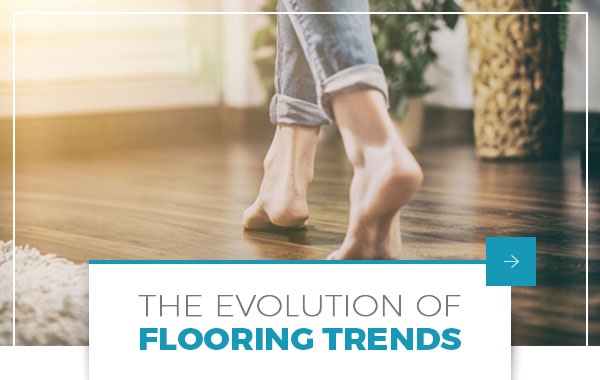
From the dirt, sand and straw floors of ancient times to the exceptionally intricate tile mosaic floors from the Byzantine period, interior flooring takes us on a journey through historical trends. Like everything in life, flooring trends tend to come and go, but a few things remain the same from century to century. The most desirable flooring types are those that are easy to produce, clean and maintain, all without sacrificing good looks. These are the factors that have forced the industry to continue advancing at a record pace.
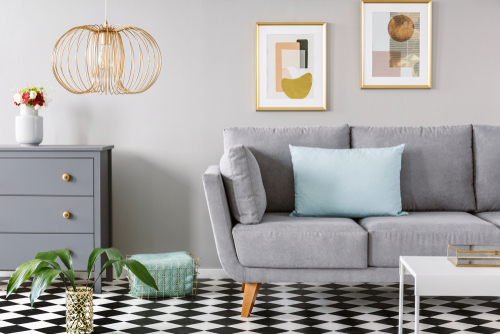
Though the history of the flooring we are familiar with today can be traced back far before the year 1800, we’re focusing on flooring trends from the past two centuries. It was during these periods that flooring went from practical, vernacular and highly limited to decorative, versatile and high-tech, thanks in part to the Industrial Revolution of the 1800s and the rise of synthetic materials in the 1900s. The massive shift in materials meant, of course, a massive shift in design, paving the way for many unique flooring trends, from elaborate parquet of the turn of the 20th century to the revival of the rustic and reclaimed of the turn of the 21st century.
Whether you are fascinated by interior design, want to select finishes appropriate to the period of your home or want to avoid anything outdated at all costs, this guide to flooring trends will captivate and intrigue. Join us as we explore them all!
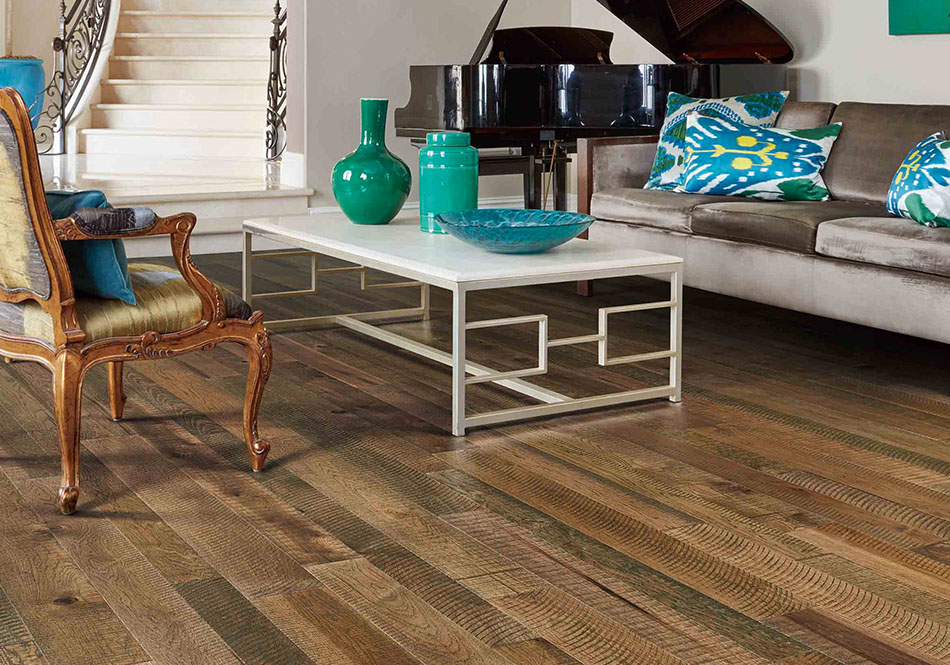
1800s: Starting off Plain, Evolving into Ornamental
The early 1800s were a time of plain, practical design, and simplicity ruled. In America, builders were relegated largely to vernacular materials, primarily the abundant wood from the ample old-growth forests. Out of pure necessity, floors were often made of tight-grained heartwood, featuring rough-sawn planks with squared edges and planks left unfinished with no varnish or stain. Tools were limited, so anything too complex was off the table. As a result, most early 19th century buildings featured bare, dull and rustic wood floors, mostly in 2 and 3 inch wide planks. But technological advancements and globalization were about to explode in the coming century, so the plain aesthetic didn’t last long.
The Desirable Complexity of Parquet Floors
Parquetry, the art of inlaying intricate wood blocks into flooring, traces its roots back to the 1600s and was commonplace among the wealthy estate owners in France and throughout Europe. Eventually, in the early 1800s, wealthy people in America could afford parquet floors in mesmerizing geometric patterns such as herringbone, checkerboard and diamond, designed to mimic the highly decorative, intricate weavings of fancy oriental rugs. Later, the practice of adding parquet elements, such as parquet borders and central design accents, allowed the less wealthy to achieve this gorgeous look for much less.
The Revival of Pretty, Patterned Porcelain
Along with ornamental wood flooring, detailed, decorative tiling was seeing a massive revival in the West, drawing inspiration from the ancient mosaic masterpieces of the Middle East. Herbert Minton, son of the founder of the Mintons Limited pottery factory, is credited with reviving interest in tile making in 1843, when he helped create new techniques for crafting encaustic tile. This type of ceramic tile utilizes different shades of clay to create elaborate, decorative inlays. As a result, many wealthy people of the Victorian Era lived in palaces replete with exquisite encaustic tiling, both in the United States and Europe.
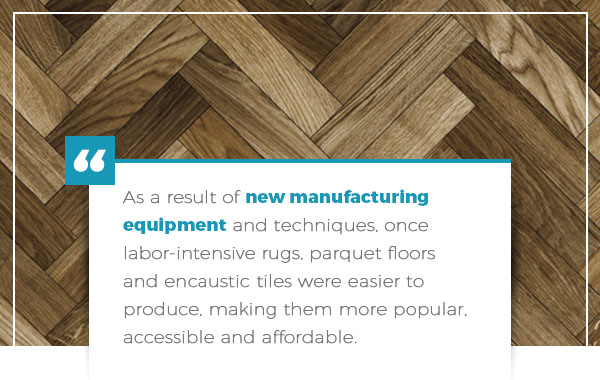
The Impact of the Industrial Revolution
The Industrial Revolution was in full swing well into the mid-1800s. At the same time, design was borrowing heavily from the plush, decorative and ornamental aesthetics of the rococo, oriental and renaissance styles. As a result of new manufacturing equipment and techniques, once labor-intensive rugs, parquet floors and encaustic tiles were easier to produce, making them more popular, accessible and affordable. The rough, rustic floors of the past were now produced with precise machinery, creating clean, attractive hardwood flooring (but we all know rustic flooring would have a massive revival some 100-plus years later).
The Beginnings of Synthetic Flooring
Though it wouldn’t become popular for another 100 or so years, linoleum was actually born out of this period as well. In 1863, English inventor Frederick Walton filed a patent for the material after stumbling upon it while researching new rubber substitutes. Walton had been tinkering with oxidizing linseed oil and ultimately created linoleum by mixing cotton scrim with oxidized linseed oil and cork dust. Linoleum, it turns out, is Latin for "linseed oil." Walton opened the Linoleum Manufacturing Company in 1872 on Staten Island. This new flooring type could take on hundreds of unique colors and textures, busting the world of flooring wide open and ushering in a whole new class of flooring types known as synthetics.
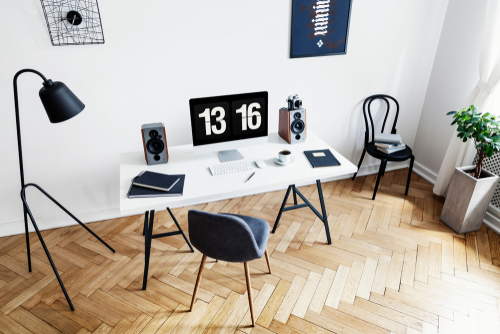
Early 1900s: The Rise of Linoleum, Vinyl and Laminate Flooring
While early phases of manmade materials were emerging rapidly in the late 1800s, these revolutionary resources didn’t really take off until the impetus of the 20th century. In addition to lab-made materials like linoleum, floors of the early 1900s were clad in rubber, cork, felt-based (asphalt-saturated felt) and asbestos, proving that clay and wood based options would soon have some serious competition. Of course, this is the decade that brought us vinyl and, in turn, some of the most popular and common flooring types of the moment. As you’ll learn, the creation of lab-made materials meant more variation in floors, leading to rapidly changing trends that evolved significantly from decade to decade.
Hardwood Gets a Coat of Gloss and More Variation
Back in the day, hardwood flooring tended to err on the side of what we now consider “traditional,” made of unfinished oak or maple. But during the 20th century, floor manufacturers were able to produce flooring from a much wider variety of woods—walnut, hickory, mahogany and cherry, for example, leading to many distinct colors, variations and styles. At the same time, shellac finishes were now widely available, so hardwood tended to get glossed over during this period, quite literally.
A New Flooring Revolution Begins with Vinyl
In 1926, Dr. Waldo Semon, an organic chemist at BFGoodrich, began tinkering with binding rubber to metal when he accidentally invented polyvinyl chloride (PVC), otherwise known as vinyl. Though we now think of vinyl as totally ubiquitous—it is in fact the world’s second most-used plastic, after all—it didn’t take off right away. In fact, it didn’t become popular as a floor covering until after World War II. But, by then, it couldn’t be stopped.
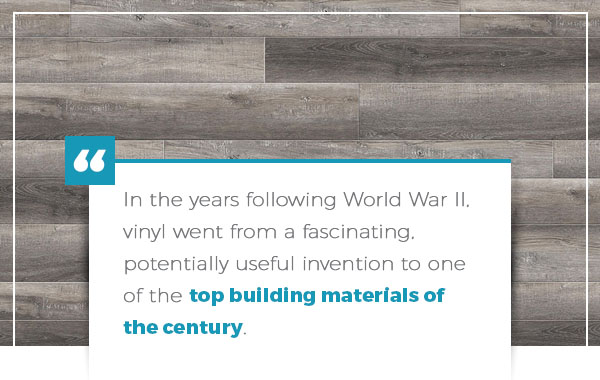
In the years following the war, vinyl went from a fascinating, potentially useful invention to one of the top building materials of the century. At the time, vinyl flooring tiles dominated the market, especially in 9 or 12 inch squares, but sheet vinyl would soon become a viable option as well. This supremely versatile material meant limitless design potential, with flooring available in every color of the rainbow and endless patterns. As a result, mid-century floors of the 1950s and ’60s tended to be quite original.
Fusing the Natural and Manmade
In addition to vinyl, the 20th century brought us even more variation in terms of material as well as new takes on natural options. Thanks to the rise of synthetics during this period, the era did bring a few new tile and stone flooring types, notably terrazzo in the 1930s. This pre-cast Italian tile is constructed from composite natural stone, including granite, marble and quartz, mixed with a chemical binder, representing another new fusion between the natural and synthetic.
Another fantastic example of this revolutionary material marriage is laminate flooring. Constructed from multiple layers of synthetic products and sometimes wood composite, laminate is able to offer a very realistic wood look without the high cost or installation challenges of typical hardwood. It was first invented in 1977 by the Swedish floor-maker Perstorp.
Engineered Hardwood Rises to the Top
The last major advancement in flooring of the 20th century is the now-popular engineered wood flooring, known for its real wood construction coupled with composite or engineered components. Engineered floors offer stability to withstand movement that occurs in high humidity environments. This flooring type was invented in the 1960s but is now one of the most popular flooring options on the market.
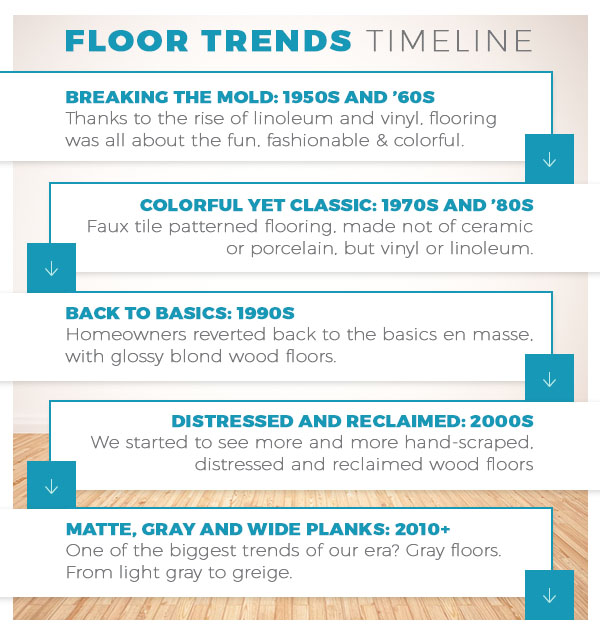
Aesthetic Floor Trends at a Glance
As you can tell, flooring has changed drastically since the days of blunt, unfinished floors in early America. It has evolved from basic, slim-plank hardwood to high-tech, limitlessly versatile vinyl, laminate and engineered wood. Let’s take a quick look at how these evolutions in material and manufacturing have contributed to aesthetic trends over the decades.
-
Breaking the Mold: 1950s and ’60s: Thanks to the rise of linoleum and vinyl, mid-century flooring was all about the fun, fashionable and colorful. These materials could take on all sorts of unique colorings and patterns—stripes, checkers, diamonds, stars, you name it—breaking big-time from the ornamentals of the Victorian Era and the simplicity of traditional hardwood. There were plenty of pastels, black and white themes and signature “mod” colors like mint green, pale yellow and orange. The post-World War II housing boom also helped to ignite the wall-to-wall carpeting craze.
-
Colorful Yet Classic: 1970s and ’80s: It was still about the laminate, vinyl and linoleum well into the 1980s. These decades, like the ones that came before, were still plenty funky, but styles were inching a bit more towards the traditional. One of the biggest trends of these years was faux tile patterned flooring, made not of ceramic or porcelain, but, of course, vinyl or linoleum.
-
Back to Basics: 1990s: It’s funny how trends come and go, isn’t it? In the ’90s, homeowners reverted back to the basics en masse, with glossy blond wood floors serving as one of the decade’s hottest interior design trends. All light woods, especially knotty pine, dominated in flooring and furniture. At the same time, wall-to-wall carpeting was back in fashion in a big way, and basically everyone had it installed.
-
Distressed and Reclaimed: 2000s: In the new millennium, we started to see designers getting cozy with darker wood floors, especially the popular Tuscan brown finish. As trends turned industrial and rustic, we started to see more and more hand-scraped, distressed and reclaimed wood floors. Fast forward to today's limited resources of reclaimed wood and you'll see this authentic rustic visual replicated in reactive stain products. The reversion to wood of the ’90s and 2000s also spurred the advancement of the (still trendy) luxury vinyl tile and plank flooring, offering a realistic wood look with a few added benefits.
-
Matte, Gray and Wide Planks: 2010+: In the past decade, we’ve seen flooring planks get wider and have embraced more satin and matte finishes. One of the biggest trends of our era? Gray floors. From light gray to greige (that’s gray plus beige, if you didn’t know), this super-trendy hue is the shade of the decade in flooring and interior design as a whole. We also see a lot of waterproof flooring today, especially in luxury vinyl tile and plank flooring and rigid core flooring. Trends seem to change faster than ever these days, but one thing is for sure: they borrow heavily from the past. Retro-inspired floors, especially those with a mid-century twist, are on their way up, too.
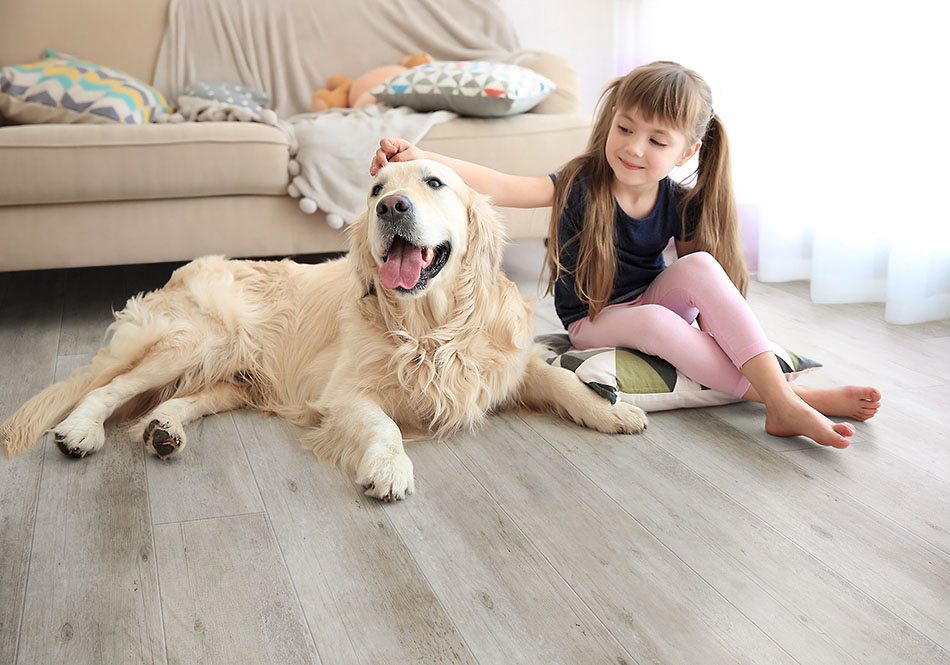
Taking Trends into Consideration
Thinking about redoing the flooring in your home or business? It’s not a bad idea to peruse catalogs and magazines of yesteryear to get some fun ideas, but remember that there are still a few flooring types that are considered trend-resistant and timeless, like a classic hardwood or simple tiling. Whether you’re cutting-edge and trend-focused or all about the traditional, Twenty & Oak is happy to help you achieve your dream flooring design.

